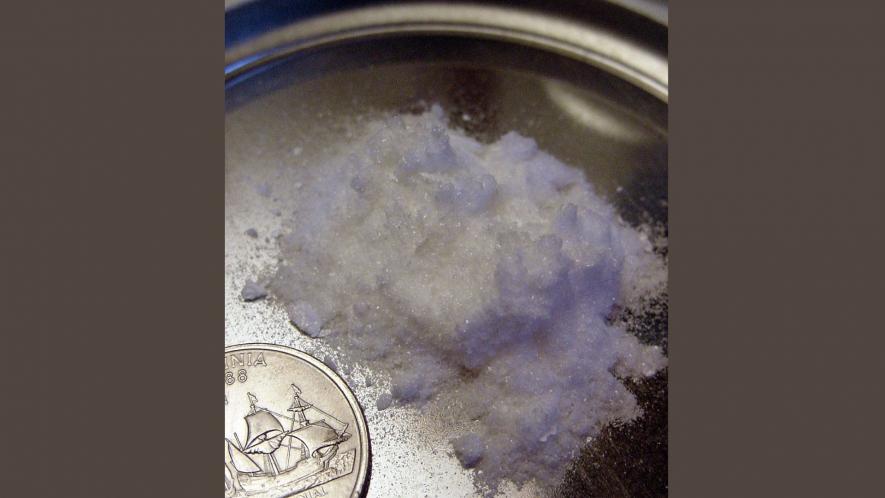Psychedelic Drugs can Reignite Brain’s Circuitry Involved in Youthful Learning and Sociability: Study

Image Courtesy: Wikimedia Commons
A recent study published in Nature on June 14 suggests that a special type of drug, called psychedelics, may induce youthfulness, sociability and enhances the capacity to learn new things. The research finds that psychedelics function by igniting a brain circuitry involved in the youthful malleability of the brain, making it more receptive and social.
Psychedelics refer to powerful psychoactive substances having the potential to alter perception, mood and can affect various other cognitive processes. They are not considered unsafe physiologically for developing dependence or addiction. Psychedelic drugs are involved in the treatment of various kinds of conditions like addiction, anxiety, PTS (Post Traumatic Stress Disorder), depressive disorder etc., along with other complicated and difficult-to-treat conditions. However, it remains uncertain how exactly the psychedelics confer their effect on various conditions and disorders and in this context, the latest study findings provide some valuable information about the way these substances function.
It is to be noted that psychedelics can cause harm in unsupervised use; this story is related to experiments in controlled settings.
Among the several types of psychedelics, the most commonly named are MMDA, also known as ecstasy, ketamine and psilocybin, the active ingredient in the ‘Magic Mushroom’. Although all of them can confer mind-altering effects, each functions by interfering with a different biochemical pathway in the brain. Scientists have wondered how these substances do this and share the ability to provide relief in depression, addiction or other difficult conditions.
Gul Dolen, the corresponding author of the recent Nature study and a neuroscientist at Johns Hopkins University, USA, along with her colleagues, tried to decipher one aspect of the psychedelics—that is, how they affect social behaviour in mice.
Here, it is worth mentioning that during the period of brain development, there exists a critical period where the brain exhibits heightened sensitivity to environmental stimuli that can affect behaviour like social mingling. Also, during this critical period of brain development, the brain exhibits increased malleability to modifications and learning.
Dolen’s team trained mice to choose a space with others or solitude. Then they applied psychedelics to the mice to see how the drug affected their choice. Her team had found in a previous study that providing MMDA or ecstasy to the mice induced the reopening of the critical period of the brain and led them to prefer to stay with others than those untreated.
For the latest study, Dole and her colleagues administered other psychedelics along with MMDA, namely ibogaine, LSD, ketamine and psilocybin. Notably, those other than MMDA are not known to promote sociability. They found that mice that received any psychedelics, whether MMDA or other, chose to live in the space with others. This, as the researchers suggest, may be an indication of reigniting the critical period of the brain by any of the psychedelics.
However, the dose of the drugs also affects the behaviour; for example, those mice overdosed on ketamine, got unconscious and were unaware of their companions. Each of the drugs reopened the window of the critical period for a different length of time, like a week for ketamine and four weeks for ibogaine.
The researchers also analysed the brains of the mice that received the drug and found that in some of the brain regions, neurons became more sensitive to the hormone oxytocin, which is also known as the love hormone. The team thinks that the drugs can cause ‘metaplasticity’ in the brain cells, which is a state where the neurons become more responsive to oxytocin. Moreover, in that state, the neurons can form new brain circuits (Or new connections). The neurons were also found to start expressing genes for proteins that can induce the neurons to form newer connections.
However, there still remain many aspects of the phenomenon regarding the opening up of the critical period for aspects other than sociability. But, further experiments are needed to bring more clarity to the topic.
In an article by Sara Reardon on the findings and published in Nature, Takao Hensch, a neurologist at Harvard University, commented that the “paper is pioneering in finding biological mechanisms for how psychedelic drugs work. It gives hope that [critical periods] are not irreversible and a very careful cellular understanding of psychedelic drugs might hold the key to reopening brain plasticity.”
Get the latest reports & analysis with people's perspective on Protests, movements & deep analytical videos, discussions of the current affairs in your Telegram app. Subscribe to NewsClick's Telegram channel & get Real-Time updates on stories, as they get published on our website.














